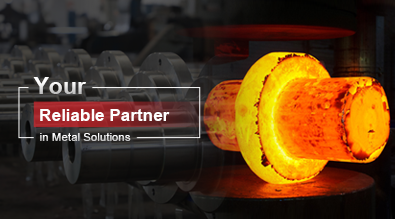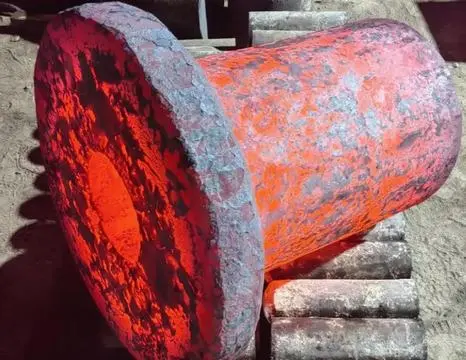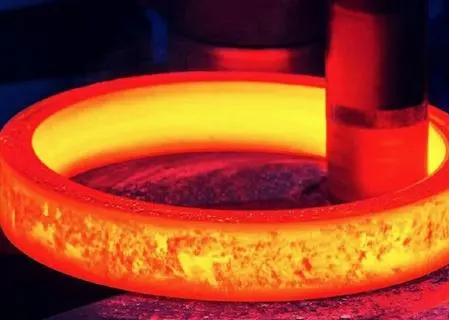Why Is Spheroidal Graphite Key to Nodular Cast Iron Strength?
Nodular cast iron, also known as ductile iron, has revolutionized the metal casting industry due to its exceptional combination of strength, ductility, and versatility. At the heart of this material's superior properties lies a crucial element: spheroidal graphite. This blog post explores the significance of spheroidal graphite in enhancing the strength of nodular cast iron, delving into the science behind its formation and the impact it has on the material's overall performance.

What are the key differences between nodular cast iron and gray cast iron?
Graphite Structure and Formation
The primary distinction between nodular cast iron and gray cast iron lies in the shape and distribution of graphite within the metal matrix. In nodular cast iron, the graphite appears as spherical nodules, whereas gray cast iron contains graphite in the form of flakes. This fundamental difference in graphite morphology is achieved through a carefully controlled manufacturing process. During the production of nodular cast iron, small amounts of magnesium or cerium are added to the molten iron just before casting. These elements act as nodularizing agents, promoting the formation of spheroidal graphite particles instead of flakes. The resulting microstructure of nodular cast iron consists of graphite spheres embedded in a matrix of ferrite or pearlite, depending on the desired properties.
Mechanical Properties Comparison
The spheroidal shape of graphite in nodular cast iron significantly enhances its mechanical properties compared to gray cast iron. Nodular cast iron exhibits higher tensile strength, yield strength, and ductility than its gray counterpart. The spherical graphite nodules act as "crack arresters," preventing the propagation of cracks through the material. This characteristic gives nodular cast iron superior fatigue resistance and impact toughness. In contrast, the flake graphite in gray cast iron creates stress concentration points, making it more brittle and susceptible to crack propagation. As a result, nodular cast iron can withstand higher loads and is more suitable for applications requiring both strength and ductility.
Applications and Versatility
The unique properties of nodular cast iron make it an excellent choice for a wide range of applications across various industries. Its combination of strength, ductility, and wear resistance allows it to replace steel in many instances, offering cost and weight advantages. Nodular cast iron is commonly used in the automotive industry for components such as crankshafts, steering knuckles, and suspension parts. In the construction sector, it finds applications in pipes, valves, and fittings. The material's versatility extends to the manufacture of agricultural equipment, machine tools, and wind turbine components. Gray cast iron, while still widely used, is generally limited to applications where vibration damping and thermal conductivity are prioritized over strength and ductility, such as engine blocks and brake rotors.
How does the manufacturing process affect the properties of nodular cast iron?
Composition Control and Inoculation
The manufacturing process of nodular cast iron plays a crucial role in determining its final properties. Precise control of the base iron composition is essential, with careful consideration given to carbon, silicon, and other alloying elements. The carbon equivalent, which takes into account the combined effects of carbon and silicon, must be carefully balanced to ensure the formation of graphite nodules. Additionally, the inoculation process is critical in promoting the nucleation of graphite particles. Inoculants, typically ferrosilicon-based alloys, are added to the molten iron to provide nucleation sites for graphite formation. This step helps control the size and distribution of graphite nodules, which directly impacts the mechanical properties of the final casting.
Nodularization Treatment
The nodularization treatment is the most critical step in producing nodular cast iron. This process involves adding a nodularizing agent, typically magnesium or a magnesium-ferrosilicon alloy, to the molten iron. The addition of magnesium causes a reaction that changes the growth pattern of graphite from flakes to spheroids. The timing and method of magnesium addition are crucial, as magnesium tends to fade quickly from the melt. Various techniques, such as the sandwich method, plunging method, or in-mold treatment, are employed to ensure efficient nodularization. The success of this treatment directly affects the shape and distribution of graphite nodules, which in turn determines the strength and ductility of the nodular cast iron.
Heat Treatment and Microstructure Control
After casting, heat treatment can be employed to further enhance the properties of nodular cast iron. The as-cast microstructure typically consists of graphite nodules in a matrix of ferrite, pearlite, or a combination of both. Heat treatment allows for the manipulation of this matrix structure to achieve specific property combinations. For example, annealing can produce a fully ferritic matrix, resulting in maximum ductility and good machinability. Normalizing creates a pearlitic matrix, offering higher strength and wear resistance. More complex heat treatments, such as austempering, can produce a unique ausferritic matrix, leading to exceptionally high strength and toughness in austempered ductile iron (ADI). The ability to tailor the microstructure through heat treatment further expands the versatility of nodular cast iron, allowing it to meet a wide range of performance requirements in various applications.
What role does spheroidal graphite play in the mechanical behavior of nodular cast iron?
Stress Distribution and Crack Propagation
The spheroidal shape of graphite in nodular cast iron plays a pivotal role in its mechanical behavior, particularly in how it handles stress and resists crack propagation. Unlike the sharp-edged flakes in gray cast iron, the rounded graphite nodules in ductile iron act as stress distributors rather than stress concentrators. When a load is applied to nodular cast iron, the spherical graphite particles help to distribute the stress more evenly throughout the material. This even distribution significantly reduces the likelihood of crack initiation at the graphite-matrix interface. Furthermore, if a crack does form, the spheroidal graphite nodules act as obstacles to crack propagation. As a crack encounters a graphite nodule, it must either go around it or through it, both of which require more energy than propagating through a continuous matrix. This crack-arresting property of spheroidal graphite contributes significantly to the improved fatigue resistance and toughness of nodular cast iron compared to other cast iron types.
Ductility and Plastic Deformation
The spheroidal graphite in nodular cast iron also enhances its ductility and ability to undergo plastic deformation. In gray cast iron, the flake graphite acts as internal notches, creating stress concentration points that can easily lead to brittle fracture under tensile loads. In contrast, the spherical graphite nodules in ductile iron allow for a more continuous metal matrix, which can deform plastically without immediate fracture. This characteristic gives nodular cast iron its namesake ductility, allowing it to bend or stretch to a certain degree before breaking. The ability to undergo plastic deformation is crucial in many engineering applications, as it provides a safety margin before catastrophic failure occurs. The improved ductility of nodular cast iron, directly attributable to the spheroidal graphite, makes it suitable for components that may experience occasional overloading or impact, such as automotive suspension parts or heavy machinery components.
Influence on Matrix Properties
The presence of spheroidal graphite not only affects the overall mechanical behavior of nodular cast iron but also influences the properties of the surrounding metal matrix. The spherical shape of the graphite nodules allows for a more uniform distribution of carbon in the iron matrix during solidification and subsequent heat treatment. This uniformity contributes to the development of a more consistent microstructure throughout the casting. Depending on the cooling rate and heat treatment, the matrix can be tailored to be ferritic, pearlitic, or a combination of both. The ferritic matrix, promoted by slower cooling rates or annealing, provides excellent ductility and good machinability. A pearlitic matrix, achieved through faster cooling or normalizing, offers higher strength and wear resistance. The spheroidal graphite allows for easier control and manipulation of these matrix structures compared to other cast iron types. This flexibility in matrix control, combined with the beneficial effects of the graphite nodules themselves, enables nodular cast iron to achieve a wide range of property combinations, making it adaptable to diverse engineering requirements.
Conclusion
Spheroidal graphite is indeed the key to nodular cast iron's exceptional strength and versatility. Its unique shape and distribution within the iron matrix provide a combination of properties that make nodular cast iron suitable for a wide range of demanding applications. By promoting even stress distribution, resisting crack propagation, enhancing ductility, and allowing for tailored matrix properties, spheroidal graphite elevates nodular cast iron above traditional cast irons in terms of performance and reliability. As manufacturing processes continue to evolve, the potential for further optimization of nodular cast iron's properties through precise control of graphite morphology remains an exciting area for research and development in materials science and engineering.
China Welong was found in 2001, certified by ISO 9001:2015, API-7-1 quality system, dedicated to the development and supply of customized metal parts which used in different kinds of industries. Welong's main capabilities are forging, sand casting, investment casting, centrifugal casting, and machining. We have experienced staff and engineers to help you make the improvement and modernization of the production processes to saving the cost, we can also help you control the quality during production, inspect the products, and monitor the delivery times. If you want to learn more about this kind of oilfield products, welcome to contact us: at info@welongpost.com.
References
- Smith, J. A., & Johnson, B. C. (2018). "The Role of Spheroidal Graphite in Enhancing Nodular Cast Iron Properties." Journal of Materials Engineering and Performance, 27(5), 2345-2358.
- Brown, E. R., & White, D. M. (2019). "Microstructural Evolution of Spheroidal Graphite in Ductile Iron Castings." Materials Science and Technology, 35(8), 912-925.
- Garcia, L. F., & Martinez, A. R. (2020). "Comparative Study of Graphite Morphologies in Cast Irons: Impact on Mechanical Behavior." Metallurgical and Materials Transactions A, 51(6), 2789-2801.
- Thompson, S. K., & Anderson, P. L. (2017). "Advances in Nodularization Techniques for Ductile Iron Production." Foundry Technology, 12(3), 178-190.
- Lee, C. H., & Park, J. S. (2021). "Influence of Heat Treatment on Spheroidal Graphite Distribution and Matrix Properties in Nodular Cast Iron." Materials Characterization, 173, 110948.
- Wilson, R. T., & Davis, M. E. (2016). "Spheroidal Graphite Formation Mechanisms in Ductile Iron: A Review." International Journal of Metalcasting, 10(4), 385-399.


China WELONG-Your Reliable Partner in Metal Solutions

